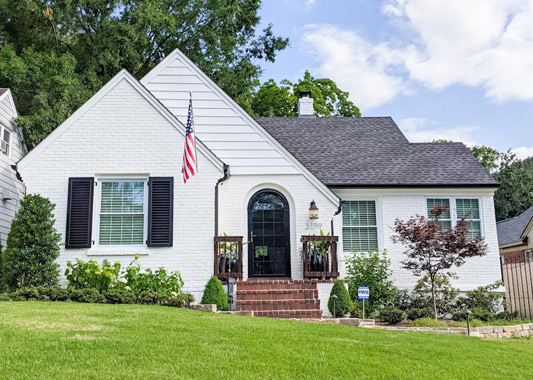
Painting your home with limewash is a rewarding DIY project, even if you’ve never picked up a sprayer before. Brushes and rollers work well for smaller areas, but using a sprayer makes larger projects faster, easier, and more enjoyable while still delivering polished, professional results.
Choosing the right sprayer ensures that even beginners can achieve dependable coverage and finish the project with ease. Before we delve into painting tips, let’s examine the three primary sprayer types and determine which one works best with Romabio products.
Choosing the Right Paint Sprayer
There are three main types of paint sprayers:
- Airless sprayers
- HVLP (High Volume Low Pressure) paint sprayers
- Pneumatic paint sprayers
For Classico Limewash, the best choice is an airless sprayer. HVLP sprayers are primarily designed for use with oil-based paints and stains, but water-based paints, such as limewash, can clog them. Pneumatic sprayers are also not recommended due to their messy application and inconsistent finish.
When you’re buying or renting equipment, look for an airless sprayer that meets these specifications:
Classico Limewash & Masonry Flat:
Masonry Textured, Lime Slurry, Velatura Mineralwash and Venetian Glaze:
These finishes are not recommended for use with sprayers.
Safety & Prep
Using an airless sprayer can save time, but preparation is critical. Proper masking and personal protection will keep the limewash where you want it and off the surfaces you don’t.
Masking and Respiratory Protection
- Cover windows, doors and trim with plastic sheeting or painter’s tape
- Lay down tarps or drop cloths to protect floors and landscaping
- Always wear a respirator or face mask. Sprayers release fine particulates that can settle on surfaces or be inhaled.
Practice & Technique
Before spraying limewash paint on a wall, practice on scrap wood or cardboard to ensure the desired effect is achieved. Fill the sprayer’s reservoir with limewash and test different spray widths. Understanding how the nozzle reacts will help you apply limewash smoothly and prevent streaks or blotches.
Adjusting Spray Tip and Angle
- Moving closer to the wall creates a narrower spray pattern with heavier coverage
- Stepping back produces a wider spray with lighter coverage
- Keep the sprayer head-on to the surface rather than at an upward or downward angle for the most consistent results
Universal Tips (Indoor & Outdoor)
- Keep the sprayer level with the surface and avoid spraying at sharp angles.
- Work from the top down for consistent, even coverage.
- Move ladders instead of overreaching to maintain safety and coverage quality.
- Wear a respirator at all times to protect against inhaling fine particles.
- Pause periodically to inspect your work and maintain a uniform finish.
- Wipe the sprayer tip regularly to prevent dried paint buildup.
Indoor-Specific Tips
- Cover all surfaces thoroughly, including HVAC vents, to keep particles from circulating through the house.
- Seal the room by closing doors before you begin spraying.
- Use a ladder for higher walls, keeping the sprayer pointed straight ahead.
- Once the paint dries and particles settle, remove drop cloths and reopen the space.
Outdoor-Specific Tips
- Check your progress often in warm weather, as limewash can dry quickly and affect coverage.
- Avoid spraying in direct sun, wind or if rain is in the forecast.
- Cover plants, walkways, and nearby surfaces to prevent overspray.
Cleanup & Maintenance
Once the project is complete, clean your equipment immediately. Flush the sprayer with clean water until the water runs clear, wipe down the tip and store it according to the manufacturer’s instructions. Proper care ensures your sprayer is ready for your next limewash project.
The Bottom Line
Using a paint sprayer with Romabio limewash is a straightforward way to achieve professional-looking results. With the right tools, a little preparation, and some practice, you’ll be able to apply limewash efficiently, both indoors and outdoors, highlighting the natural beauty of your home with a smooth, even finish.
When you’re ready to take the next step, Romabio makes it simple to bring your vision to life with products that are easy to use and trusted by homeowners and pros alike.
Need to Hire a Romabio Preferred Pro?
Find a PRO – Need expert guidance? Connect with experienced PROs who know how to work beautifully with Romabio’s mineral-based paints and limewash for a flawless finish.
Find a Store – Enter your zip code to discover retailers offering Romabio products near you, where you can also customize your paint colors.



 Photo Credit: Caldwell House, TN
Photo Credit: Caldwell House, TN